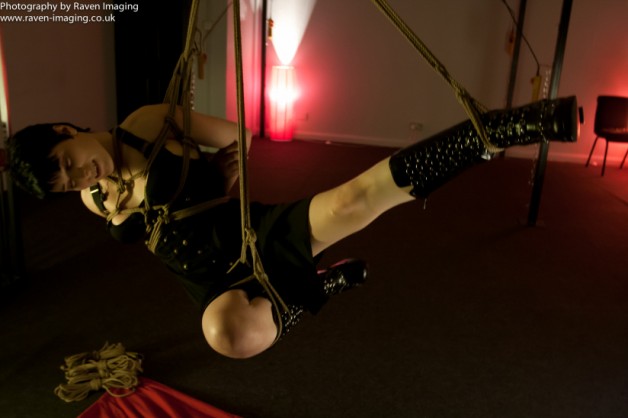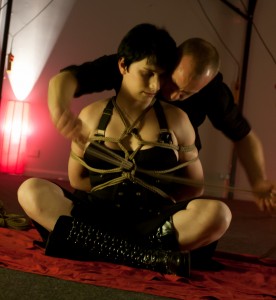I had to share this post by the partner of a fairly recent student, Benjamin, who has been making excellent progress. This was his first public session at Exodus. As he says, he made a few mistakes but I think it’s a damn good job, especially since he figured out the hishi takate-kote by extrapolating what he had learned. Self-critique is an important key to development as drives constant improvement. I can tell Benjamin a craftsman by trade, he is used to working with his hands and to a high standard of precision. It shows in his approach to learning rope.
To misquote My Fair Lady “By George, I think he’s got it”. It is always a proud moment as a teacher when you see one of your fledglings take their first flights. Hopefully, they will learn to soar to the greatest heights. It does well to bear in mind these wise words:
“One repays a teacher badly if one always remains nothing but a pupil.”
― Friedrich Nietzsche, Thus Spoke Zarathustra
Posted by Aemilia Hawk on her Velvet Thoughts blog
“Recently it has been quite a busy time for me and mine. We have attended about 6 events in the past two weeks, hence why there has been such a delay in blog posts.
One form of our play that has lately been taking a large portion of our attention is Kinbaku.
In this post I am going to explain a little about what we go through before, during and after play of this kind. I must stress that these opinions are based solely from our own perspective and experiences.
Kinbaku, for me, is the only style of rope that is really close to my heart because it is not simply about tying pretty patterns. It is about awakening emotions, senses and arousal. With any other type of rope play; you can tie someone, but with Kinbaku, you must put your heart and soul into it. It’s emotion, it’s connection, it’s control, it’s sensual.” – Benjamin.”
Read more at Something beginning with ‘K’ | Velvet Thoughts.


